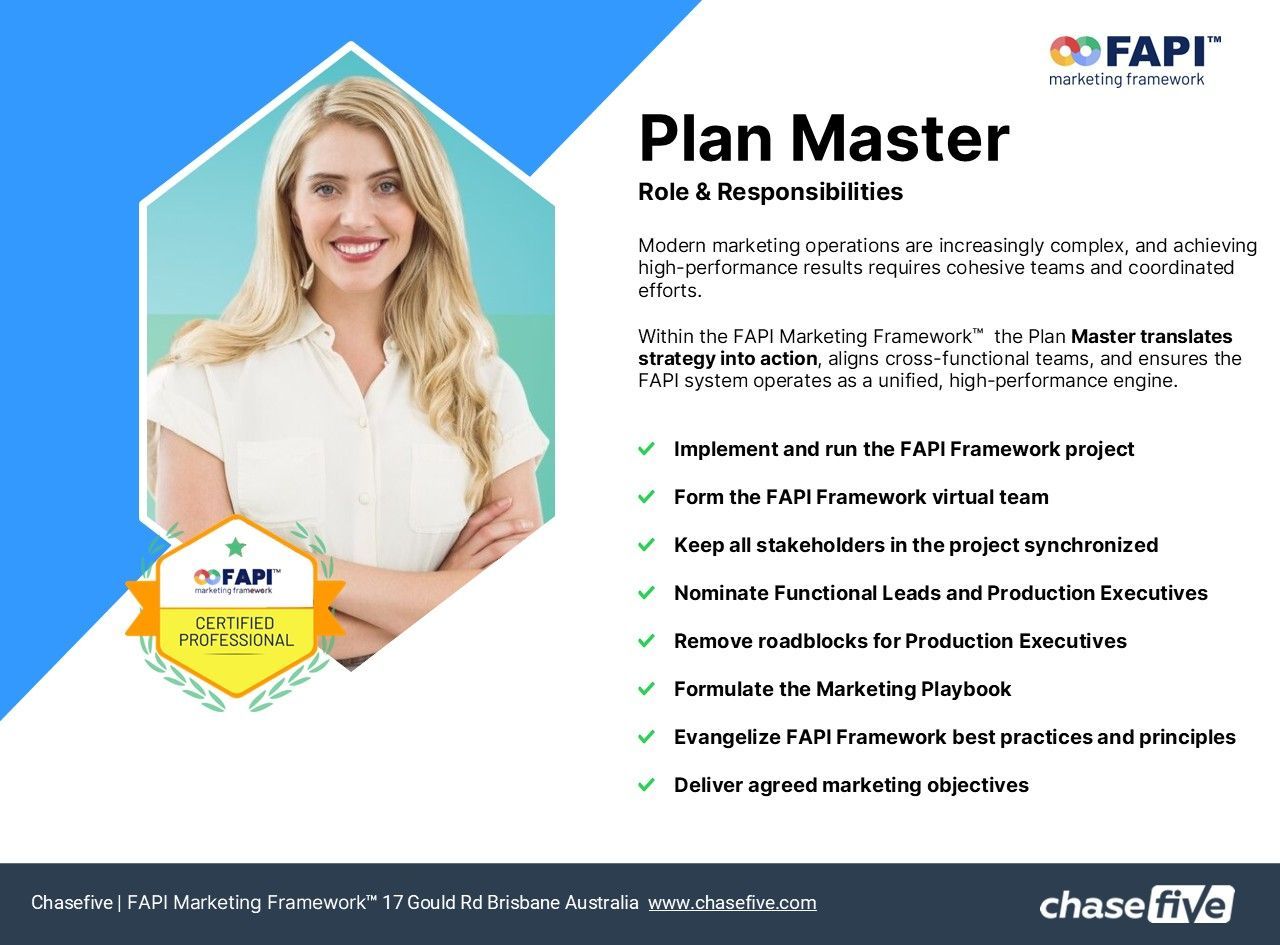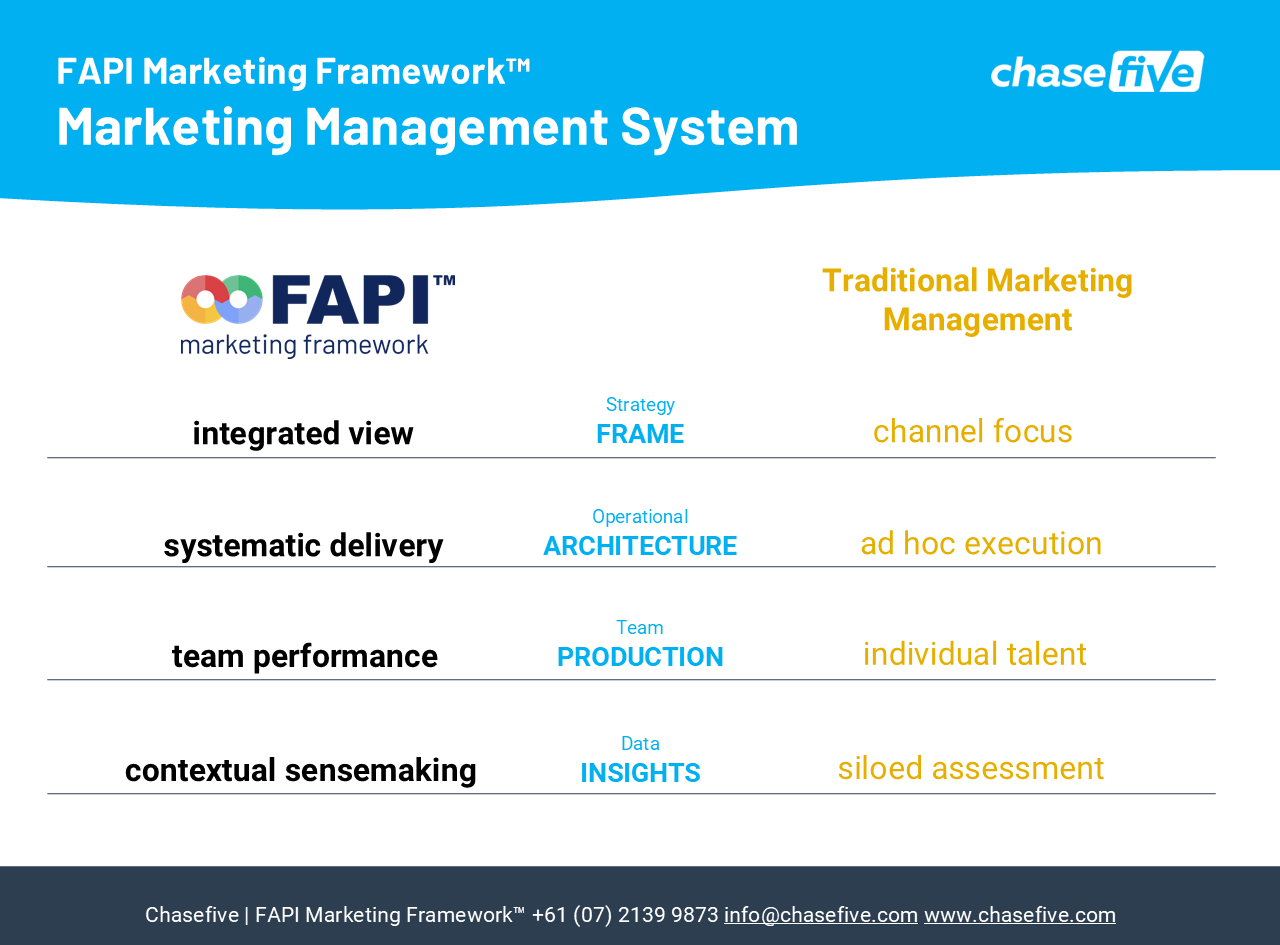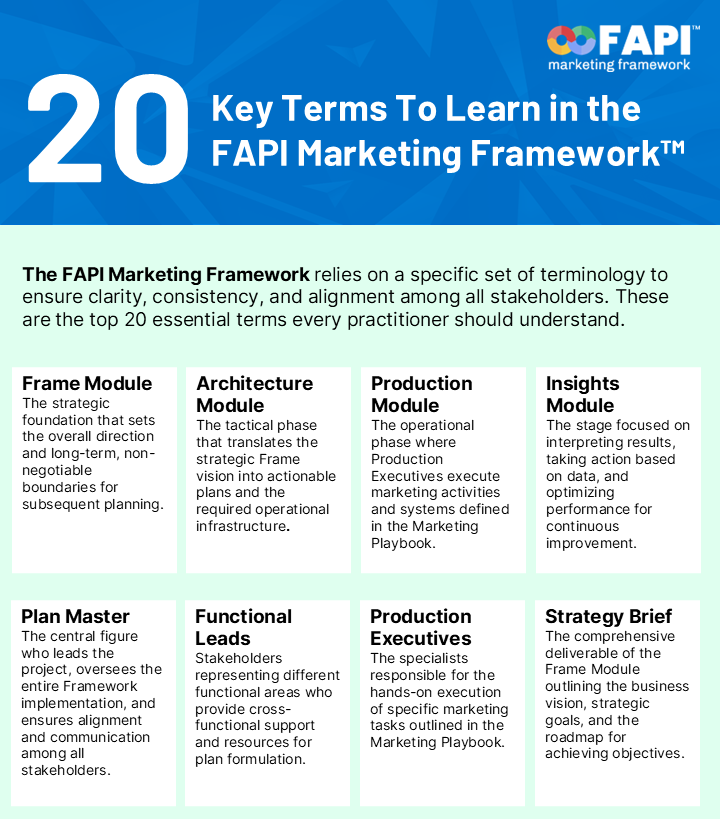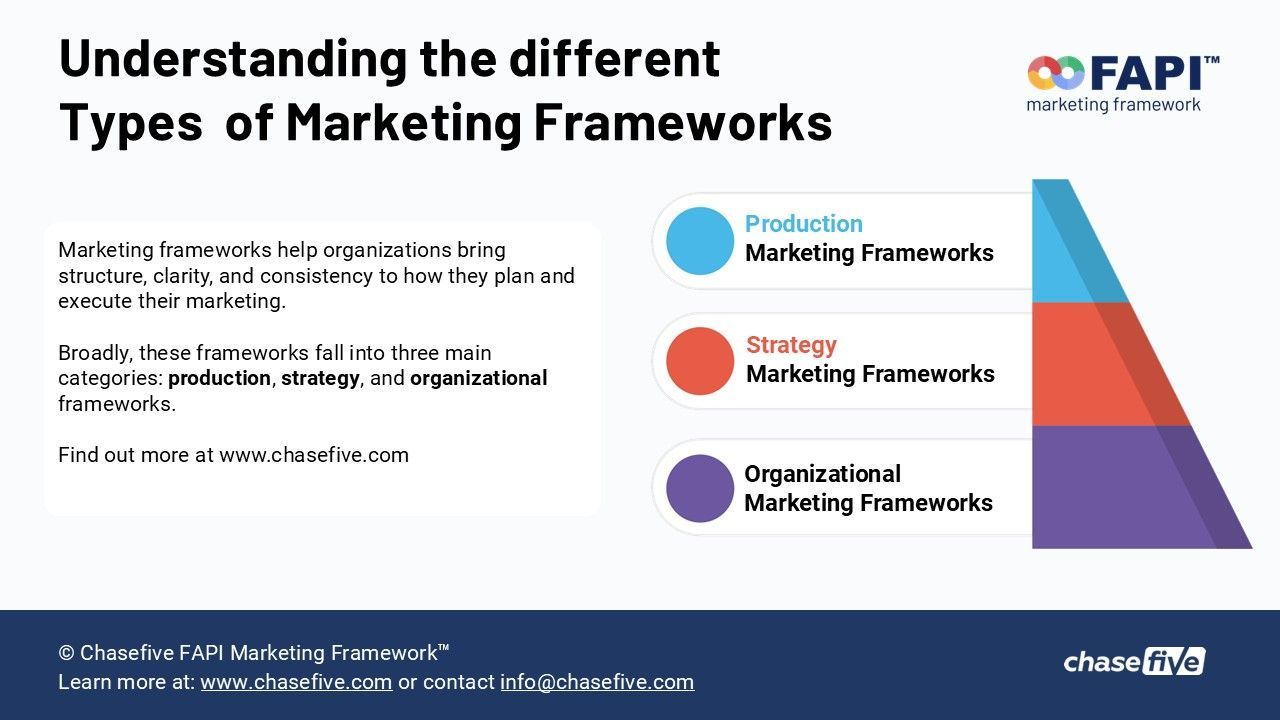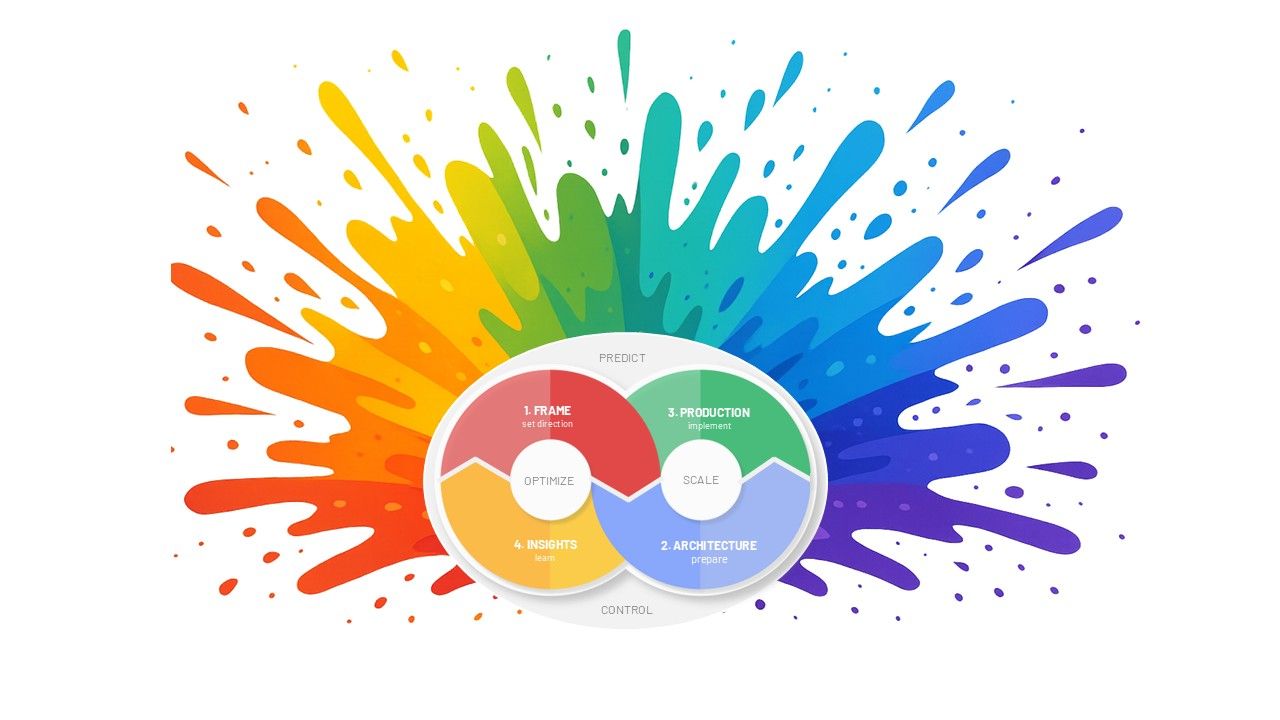Resolving Marketing Accountability with the FAPI Marketing Framework
The FAPI Marketing Framework highlights accountability in marketing, assigning clear responsibilities to various roles and ensuring that marketing efforts align with overall business objectives.
The framework promotes a culture of shared responsibility for marketing success by defining key performance indicators (KPIs) relevant to all stakeholders.
Here's a breakdown of how accountability is addressed within the FAPI Marketing Framework:
1. Clear Roles and Responsibilities:
o Plan Master: The Plan Master is key within the FAPI Marketing Framework, overseeing the implementation of marketing projects. They build a dedicated team, enable effective communication, and coordinate activities to achieve marketing objectives while ensuring alignment with the business's overall goals for a strong return on investment (ROI).
o Functional Leads: Functional Leads are vital for cross-functional support, coordinating resources and expertise for effective plans. They collaborate with the Plan Master to develop specific modules and ensure their area aligns with the overall marketing strategy.
o Production Executives: Production Executives play a crucial role in executing specific marketing tasks outlined in the plan. They are responsible for ensuring that the work delivered meets high-quality standards and aligns with the overall brand and messaging of the marketing campaign.
o Leadership Team: The Leadership Team is essential in guiding the organization by setting strategic direction and ensuring alignment with business goals. They monitor project progress, track milestones, assess marketing effectiveness, and evaluate return on marketing investment (ROMI). The team also provides guidance and makes key decisions during challenges.
2. Defined Deliverables:
The FAPI Framework is structured with clear deliverables at each stage, making progress and accountability visible. The Strategy Brief is the deliverable for the Frame Module, outlining the business vision and strategic goals. The Marketing Playbook is the deliverable for the Architecture Module, providing a detailed operational document for execution.
In the Production Module, the activities themselves serve as deliverables, and in the Insights Module, reports and recommended actions are the output. These deliverables act as milestones and ensure accountability at each phase of the project.
The Insights Module highlights the crucial role of data-driven decision-making in marketing strategies. It advocates for the use of precise metrics to assess marketing performance, allowing for necessary adjustments.
4. Cross-Functional Collaboration:
The framework promotes cross-functional teamwork, ensuring that all stakeholders are involved in the marketing process. This includes stakeholders from different departments, who participate and contribute through project events, thus fostering a shared sense of ownership and accountability.
By promoting communication and understanding across departments, the FAPI Framework minimizes the potential for misalignment and ensures that marketing efforts contribute to the overall business objectives.
5. Continuous Improvement and Adaptability:
The framework values continuous improvement, using feedback loops to learn from successes and failures. This iterative approach encourages teams to adapt their marketing strategies based on performance data, holding them accountable for ongoing optimization and growth.
6. Budgetary Accountability:
The FAPI Framework also emphasizes resource stewardship and efficient use of resources. The Plan Master is responsible for overseeing the budget and ensuring a return on marketing investment (ROMI), promoting accountability in financial management.
In summary, the FAPI Marketing Framework promotes accountability by establishing clear roles, defining deliverables, emphasizing data-driven decision-making, encouraging cross-functional collaboration, and promoting continuous improvement.
This comprehensive approach ensures that all stakeholders are aware of their responsibilities and are held accountable for their contributions to the marketing success of the organization.
Use the FAPI Planner to drive accountability and efficiency
The FAPI Marketing Planner is a cloud-based tool designed to streamline marketing planning and management by implementing the FAPI Marketing Framework. It offers a user-friendly interface with pre-populated modules and components, enhancing team collaboration and task management.
Request a FAPI Planner demo for free
